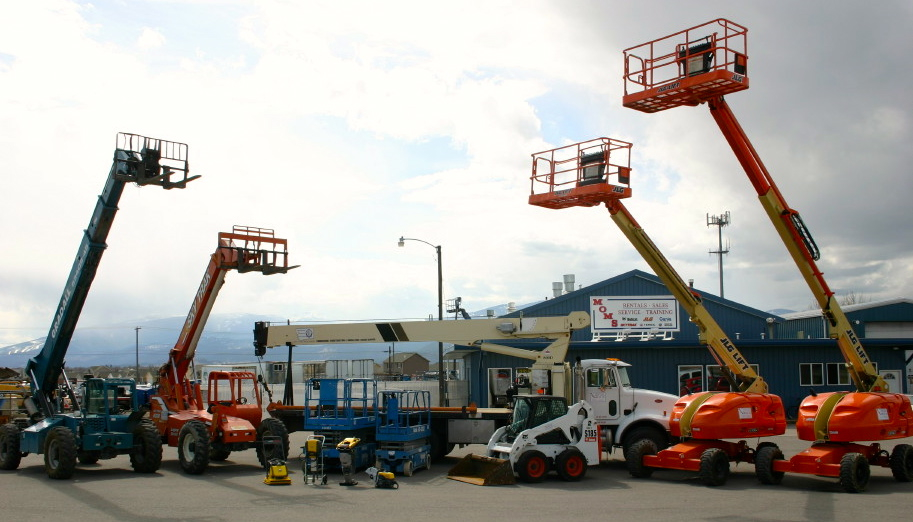Aerial Lift Rental: Versatile Lifting Solutions for High-Access Jobs
Aerial Lift Rental: Versatile Lifting Solutions for High-Access Jobs
Blog Article
Maximize Your Spending Plan by Understanding the Costs Connected With Building And Construction Devices Leasings
Recognizing the full extent of costs associated with building equipment rentals is important for optimizing your spending plan. What strategies can be used to effectively manage these prices and make sure a much more reliable rental experience?
Overview of Rental Prices
When taking into consideration building equipment rentals, understanding the connected expenses is paramount for reliable budgeting and project preparation. Rental costs can vary dramatically based upon several elements, including devices kind, period of leasing, and area. The first rental fee frequently shows the devices's market need and its linked operational abilities, influencing the general expense.
In addition to the base rental rate, supplementary costs might arise, such as transport fees, fuel additional charges, and maintenance charges. It is crucial to represent these added expenses to properly examine the complete cost of renting equipment. Moreover, the rental period can affect prices; longer rentals may get reduced rates, while short-term rentals may sustain greater day-to-day charges.

Break Down of Rental Rates
A detailed understanding of rental prices is important for specialists and project managers aiming to maximize their budgets. Rental rates for building tools normally consist of several parts, consisting of base prices, time-based charges, and usage charges.
Base rates are the core costs related to the leasing of the tools, usually determined by the type and size of the machinery. These rates can vary considerably, influenced by variables such as devices need, schedule, and local market fads. Time-based costs, which might be daily, weekly, or monthly, offer to fit different project timelines and rental periods.
Additionally, rental rates may consist of usage fees, which apply when devices is utilized beyond a defined limit, guaranteeing that the rental company can make up deterioration. Seasonal demand fluctuations can also impact rental rates, with peak building periods generally regulating greater costs.
Furthermore, understanding the rental company's policies pertaining to upkeep and insurance can give more insight into the general price framework. By evaluating these parts, contractors can make educated choices, guaranteeing the selection of rental tools aligns with both project needs and budget restraints.
Extra Charges to Consider
Understanding the intricacies of added costs is essential for specialists to handle their general rental expenses successfully. Past the typical rental prices, various additional costs can considerably impact the complete expense of devices leasing. These costs typically consist of delivery and pickup costs, which can vary based upon range and logistics entailed in delivering the my latest blog post tools to and from the work site.
Moreover, some rental companies might enforce gas surcharges if Continue the devices is returned with less fuel than when leased. It is also vital to understand potential cleaning charges, particularly for specialized devices that requires extensive upkeep after usage.

Completely examining the rental agreement and clearing up these added charges ahead of time can help specialists stay clear of unanticipated prices and make certain that budgets continue to be intact throughout the job lifecycle.
Repair And Maintenance Expenditures
Normal maintenance and fixing expenditures are usually forgotten elements that can considerably affect the overall expense of construction tools leasings. When renting out equipment, it is critical to consider not just the rental charges yet additionally the potential prices related to keeping the machinery in ideal operating condition.
Lots of rental firms consist of standard upkeep as part of the rental agreement; however, a lot more unforeseen malfunctions or considerable fixings can lead to added expenditures. It's important to review the rental contract meticulously to understand what upkeep services are covered and what responsibilities drop on the renter.
Furthermore, equipment that is not well-kept can bring about ineffectiveness on the work website, possibly creating hold-ups and raising project expenses. To alleviate these threats, it is recommended to carry out regular inspections and preserve open interaction with the rental company relating to any type of problems that arise during use.
Insurance Policy and Liability Costs
Insurance policy and responsibility costs try this site are essential elements that can significantly affect the general expenditure of building tools rentals (equipment rental company). These expenses make certain that both the rental business and the customer are safeguarded from potential monetary losses developing from crashes, damages, or theft during the rental duration

Additionally, customers need to understand any deductibles or exemptions in the insurance coverage, as these can impact potential out-of-pocket expenditures. Recognizing the terms of any type of insurance coverage is essential to avoid unforeseen expenses. Eventually, budgeting for insurance coverage and liability expenditures can help make sure a smoother rental experience and safeguard versus monetary threats connected with building jobs.
Conclusion
In final thought, an extensive understanding of the prices connected with building and construction equipment rentals is vital for reliable budget monitoring. Ultimately, informed decision-making regarding devices leasings contributes to the total success of building undertakings.
Rental prices can vary dramatically based on a number of aspects, including equipment kind, duration of leasing, and area (construction equipment rentals). The rental period can affect pricing; longer services might qualify for discounted prices, while short-term leasings might sustain higher day-to-day costs
By carrying out thorough research and engaging with credible rental companies, contractors can effectively browse the intricacies of rental rates, eventually maximizing their monetary sources.
Beyond the typical rental rates, numerous additional fees can considerably impact the complete expense of devices rental. Rental firms commonly give responsibility insurance policy that covers injuries to 3rd events or damages to building, while tools damage insurance can cover the price of repair work or substitute if the leased equipment is damaged.
Report this page